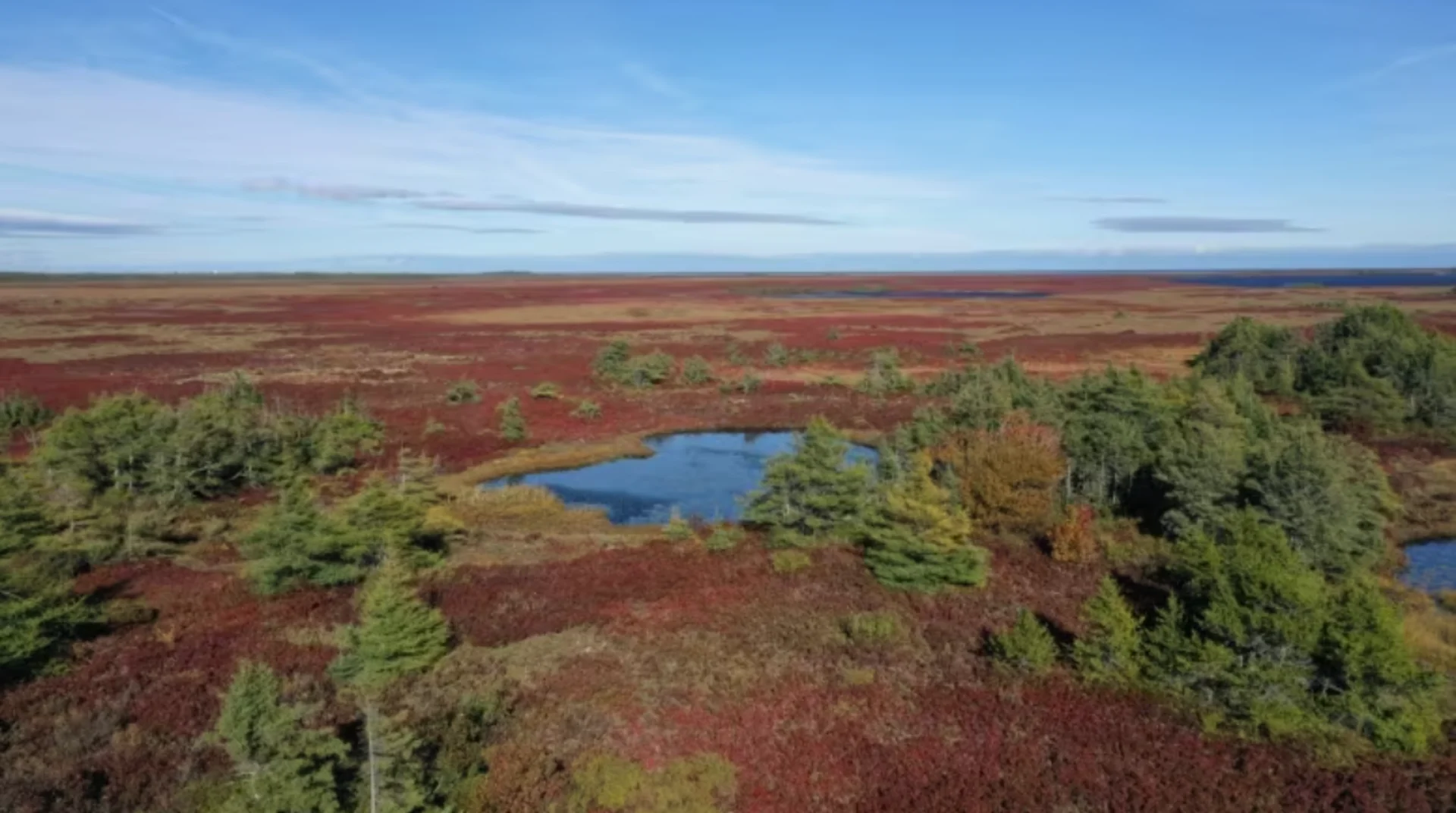
New Brunswick's peatlands: A little-known industry troubled by rainy weather
On a gusty fall day on Lamèque Island, Jean-Yves Daigle treads across a sprawling bog, a blend of soggy red, white and green vegetation.
He stops and kneels down, tearing a large handful of nutrient-rich sphagnum moss from the ground and watching water trickle down.
"To have a thickness of about one metre, it would take a thousand years to accumulate material," Daigle explains, pointing to the earthy material below the moss.
These soggy fields of dense wetlands on the Acadian Peninsula are thick with vegetation that has decomposed over thousands of years, turning into peat.
SEE ALSO: Inside Canada’s fight to save its peatlands
The organic soil under the bog's surface is a big business in northeast New Brunswick, processed and shipped around the world as a starter for everything from roses to tomatoes.
In the rural areas of New Brunswick where most production sites are located, mostly on the Acadian Peninsula, the Baie-Sainte-Anne area and Kent County, peat is often the second largest industry after fishing. It directly employs about 2,000 people and generates about $250 million in a typical year, according to the province's industry association.
But the weather-reliant industry is now in turmoil, after a summer of frequent rain storms left fields too swampy for harvesting and sent production levels plummeting.
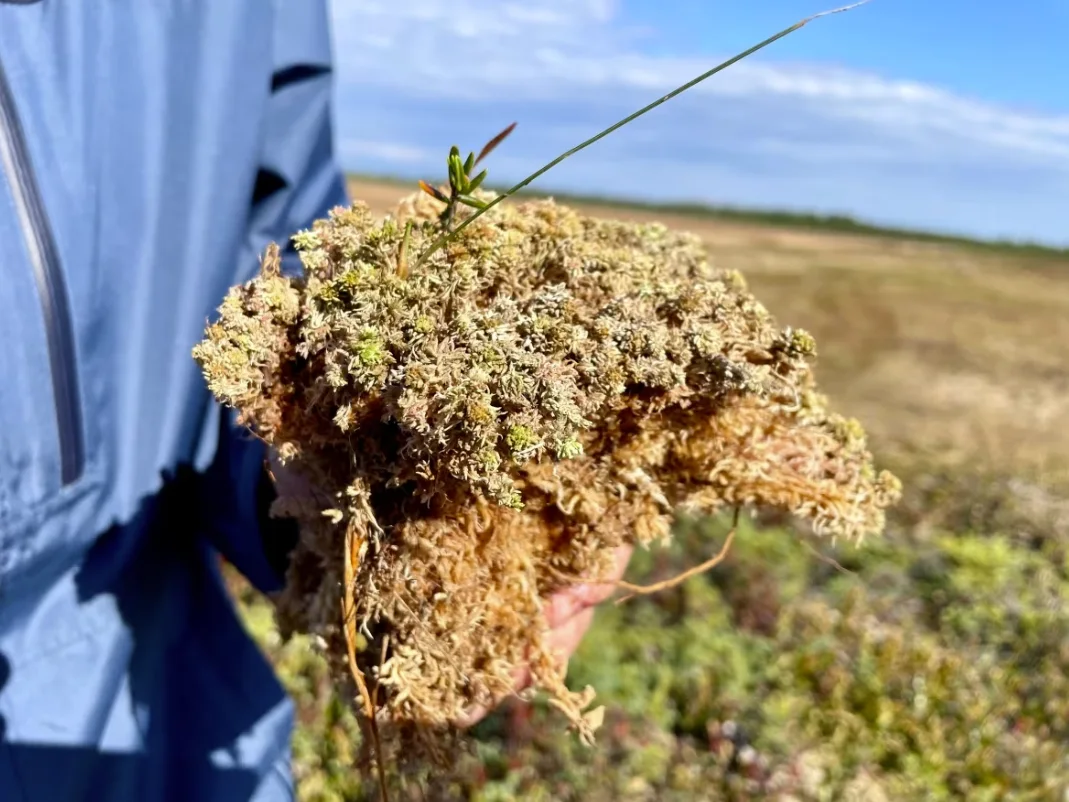
Daigle holds a handful of sphagnum moss, which contains about 90 per cent water. The bottom part of the organic material is peat. (Alexandre Silberman/CBC)
'The worst season ever'
Daigle, an environmental scientist and director of the New Brunswick Peat Moss Association, has been studying the peatlands for decades. He directed a peat research centre for 22 years at the Université de Moncton's Shippagan campus.
The climate on the Acadian Peninsula has allowed vast expanses of bogs to form. On Miscou Island, at the easternmost tip of the peninsula, about 50 per cent of the land is covered by peatlands that turn to vivid colours in the fall.
At a site in Lamèque where peat cliffs have naturally formed on the shoreline, Daigle said researchers uncovered tree stumps under the bog that were carbon-dated to more than 3,600 years old.
DON'T MISS: Winemakers adapt grape varieties due to extreme weather
"It's water saturated, it's acidic, it preserves anything that would be in there," he said.
New Brunswick's peat resource only began to be exploited in the 1940s, starting with a bog in Shippagan, before operations expanded across the region. Over time, large processing plants opened up to turn peat into specialized and highly secretive mixtures for export.
At commercial peat operations, fields are prepared for harvesting with equipment to level, loosen and fluff the peat moss at the surface. Ditches are excavated to drain water from the fields to allow the peat to dry.
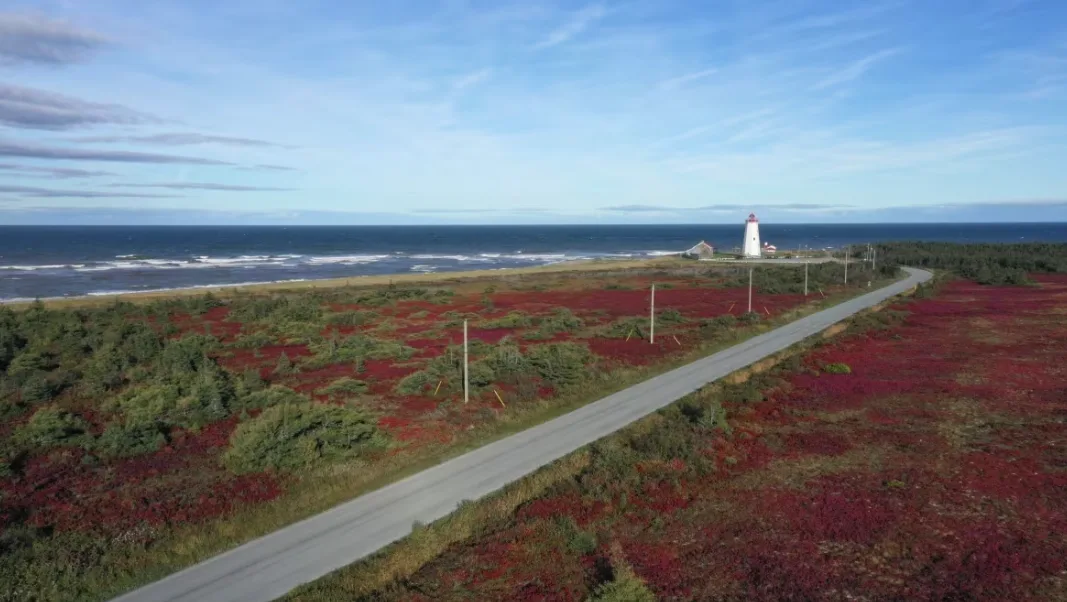
About half of Miscou Island, at the easternmost tip of the Acadian Peninsula, is covered in peatlands. (Mike Heenan/CBC)
Once it's time for harvesting, a large vacuum pulled by a tractor collects a thin layer of peat from the surface and dumps it into piles. The material stays covered in the fields until it is eventually transported to a processing plant to be filtered and turned into soil mixes.
Over the summer, the region recorded high amounts of rainfall, leaving little time for the fields to completely dry.
Daigle said the weather conditions significantly impacted producers, with production down to an average of 40 per cent of a normal harvest.
"'23 — that's the worst season ever according to the older peat producers."
'It's very tough'
In the community of Rexton, René Duguay drives a pickup truck around the 240-hectare Saint-Charles Bog. It's one of several sites he manages, overseeing operations from preparing the bogs for harvest to fine-tuning the processing operations.
"It's not a very well-known industry, but we have a pretty good impact on the New Brunswick economy," he said.
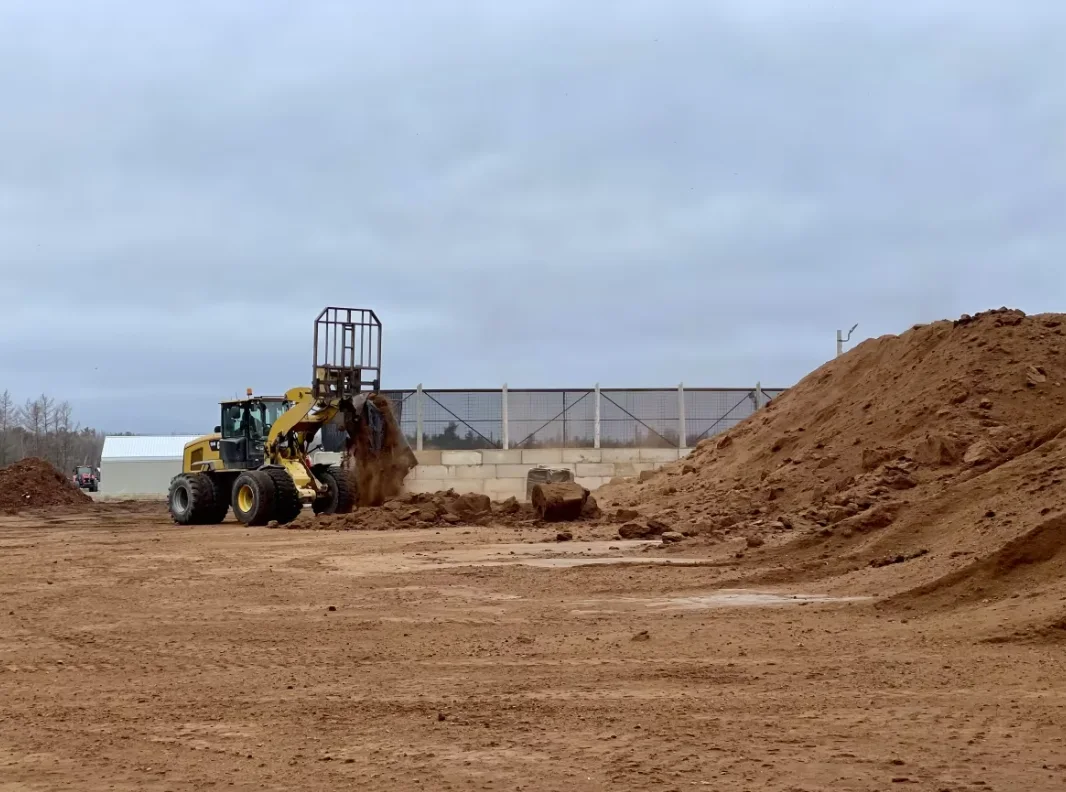
A bucket truck transports peat from storage piles to a processing plant in Rexton, where it is turned into mixes. (Alexandre Silberman/CBC)
As Duguay navigates the wide-open site, he points out sporadic piles of peat covered by white tarps. Normally, he says, the peatlands would be full of them.
"It has been a very difficult season for all the producers almost everywhere in Canada," he said.
"The year before was just average or even below average. So it's two bad seasons in a row. It's very tough for the industry as well as for our employees."
The people who work at harvesting the bogs are seasonal — and many rely on employment insurance to get through the winter. This year, many employees lost income and fell short of the hours required, but changes by the federal government mean most will still qualify for benefits.
Duguay production is down to about 30 to 40 per cent of a typical year, resulting in one of the worst seasons he's seen in more than two decades in the industry. He thinks the drop will result in a shortage, and processing plants will run out of peat for mixes before the spring.
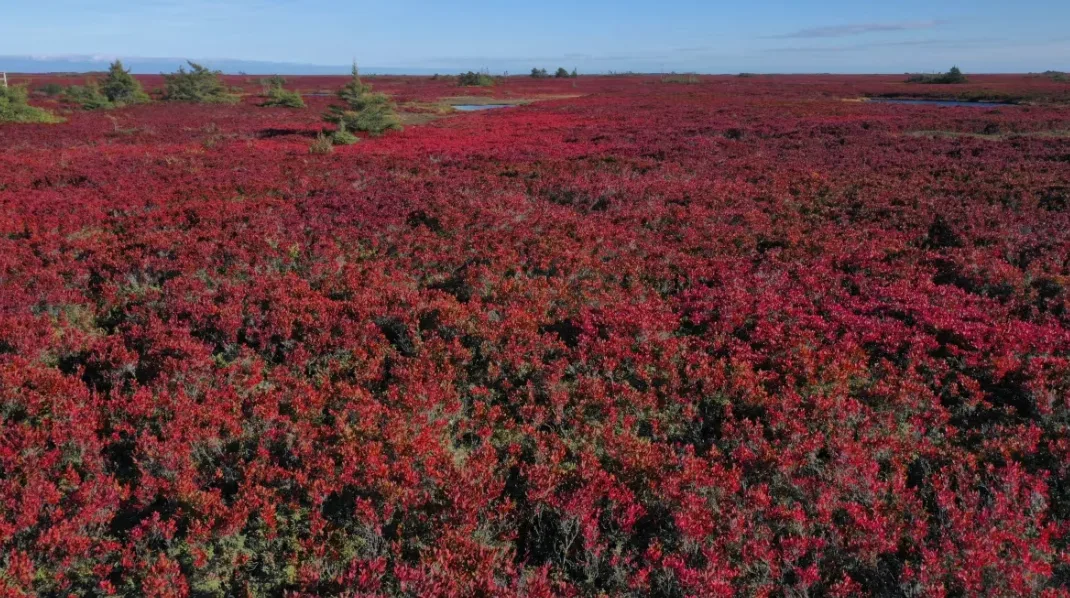
In the fall, New Brunswick's peat bogs turn to a vivid red. This one is on Miscou Island. (Mike Heenan/CBC)
No easy alternative
Peat is widely used, and there are large commercial and retail markets beyond bags of compost mix at garden centres. The industry sells to large-scale greenhouses, cannabis growers, vineyards and is also used for the greens on golf courses. Peat a starter for seedlings that is consistent in quality and free of bacteria that could harm plants.
WATCH: Breathtaking fall colours in New Brunswick
Producers expect a short supply next spring for commercial and retail markets — so peat mixes could be hard to find on the shelves at local garden centres.
But environmental scientists say there's currently no product on the market to effectively replace peat, which absorbs water while still allowing for proper drainage.
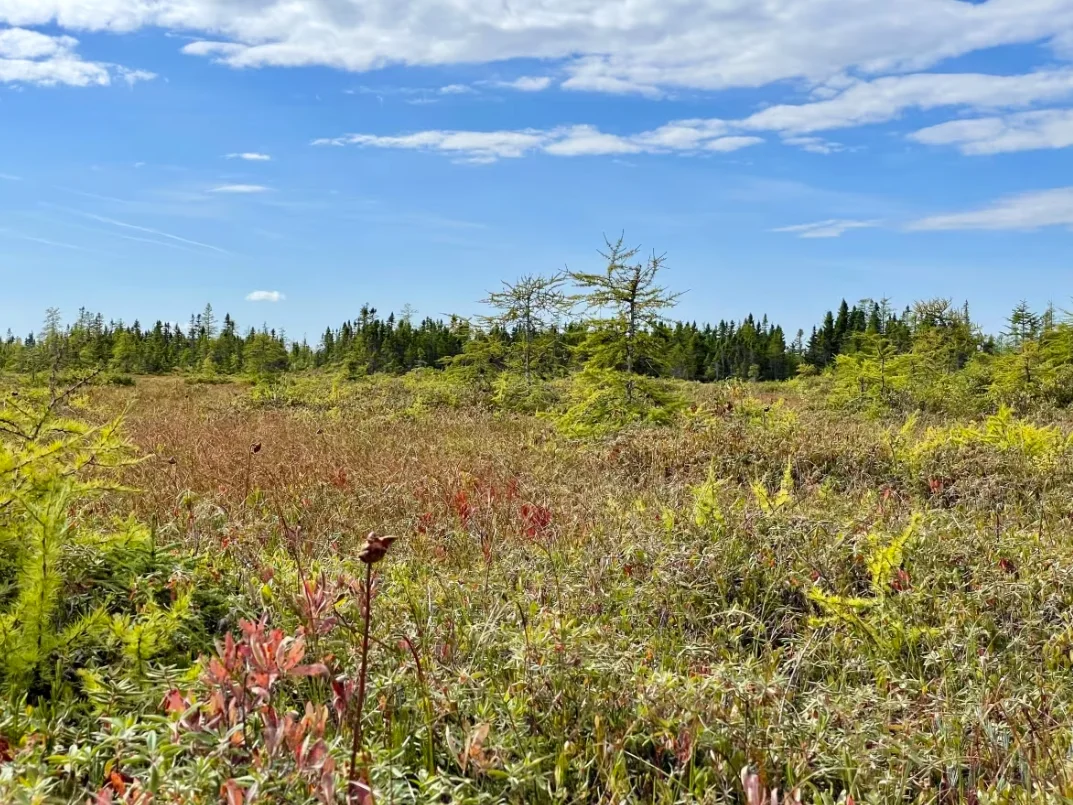
New Brunswick's peat industry started in the Shippagan area in the 1940s. This restored bog was one of the first sites in the province to be harvested. (Alexandre Silberman/CBC)
Youbin Zheng, a Guelph University horticulture professor who specializes in soils, has been searching for alternatives for the past two decades.
"The consequences could be huge," he said. "Peat moss is a big chunk of the growing media used in greenhouse production."
Zheng said the impact could be even larger in the U.S., where about 90 per cent of Canadian peat is exported.
In recent years, there's been a growing push to protect and restore peatlands for environmental reasons. The soil contains vast amounts of carbon and globally stores more than forests.
In New Brunswick, Daigle said that the vast majority of peatlands are already protected and untouched by commercial operations. Those that are exploited are restored with mosses and vegetation when there is little left to harvest.
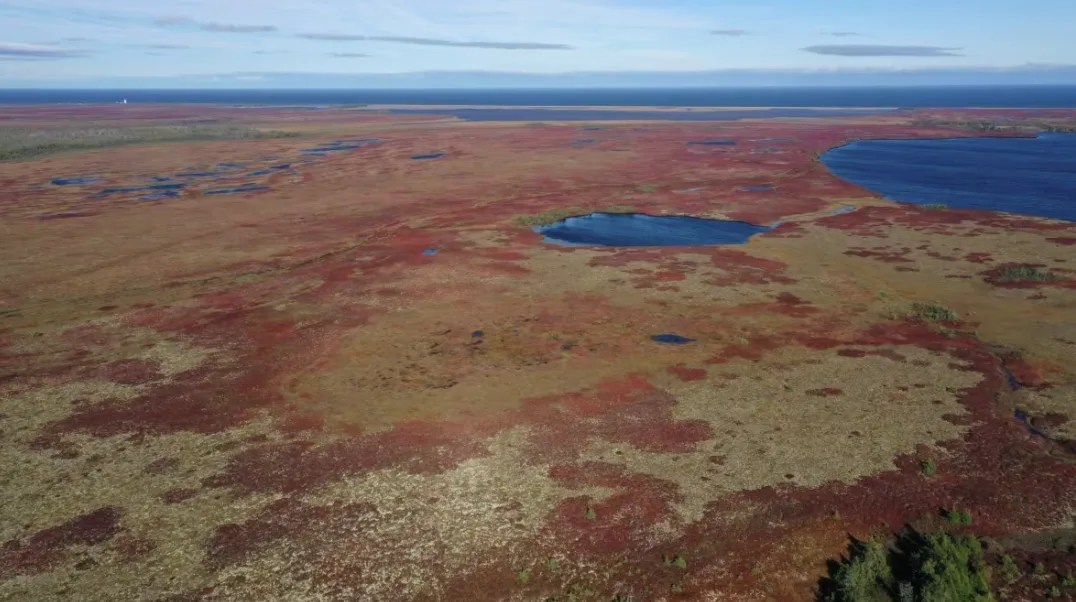
Most New Brunswick peatlands remain untouched by commercial operations. (Mike Heenan/CBC)
Zheng said the environmental impacts have led some countries in Europe to try to move away from peat, and a drop in supply could encourage them to keep trying alternatives. But he said composts and other mixes still contain some smaller amounts of peat.
Another issue: other growing materials simply can't match the consistent quality of peat, batch after batch, and year after year.
Moving away from peat wouldn't be easy, Zheng said, since the horticulture industry has been using it since the 1960s.
"The shortage of peat moss would limit these sectors' production for sure."
Thumbnail image courtesy of Mike Heenan/CBC News.
This article, written by Alexandre Silberman, was originally published for CBC News.










